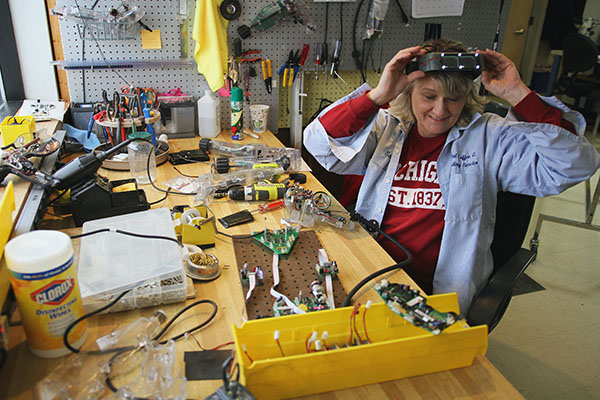
With the rapid development of the material industry, plastics are widely used in various industries due to their light weight, high specific strength, corrosion resistance, and easy processing. Plastic products are more prone to damage than metal products. However, plastic is very malleable, easily to be melted and reattached with a soldering iron. While a restored object won't look exactly like the new, with practice you can make smooth plastic soldered that aren't as noticeable in appearance.

As you know, most plastics can be fragile and break very easily. Most people just throw the cracked item in the trash and buy a new one. To save your budget, you can restore those cracked plastic items with handy bench tools.
Soldering plastic with soldering iron is not limited to repairs: you can solder plastic for manufacturing and even artistic purposes. If you already own a soldering iron or station - you can start soldering plastic today. Of course, this takes a bit of skill and tricks.
Let's walk through the process. (Note: Before attempting your first soldering, you may want to experiment on scrap plastic to see how long you need to hold your soldering iron to a specific point on the plastic.)
1. Clean plastic: completely clean plastic with soap and skippot
2. Postering the edge: polish the edge of the plastic to avoid jagged
3. Insert the soldering iron: This tool needs to be warm up, which should take a few minutes
4. Start soldering: Push two plastic together and fix it there, and run the iron head along the seam until the two plastic parts melt together
5. Adjusting plastic: The welding seam requires some time to cool and solidify. When the plastic is still hot and can be moved, adjust them so that they can fit as much as possible
6. Strengthen plastic welds: This is optional, but adding fine plastic strips to the weld can help keep them together after completion
7. Make sure that the plastic is completely melted: these plastic sheets are pressed with an iron head until they liquefy to make them completely melt
8. Inspection: Use the soldering iron to quickly and smoothly sweep the joints and the surrounding plastic, so that the work is as close to the original appearance as much as possible
1. Choose the right tip - every crack is different, so choose the one that best suit the problem you are experiencing. Sometimes a fine point is best, and sometimes a chisel is better.
2. Practice on waste plastic - This is important, even if you are a skilled welder, handling plastic is different
3 Try the bottom or back - if you want to hide the weld, if possible, work on the side of the crack that won't be seen by anyone.
4. Use an adjustable soldering iron -- this gives you more control over your work and helps you adjust if needed.
Final
Avoid breathing in too much smoke. Make sure to do some practice on scrap first, as plastic is delicate and you need a deft touch to make the results look good.
If any questions, feel free to contact AiXun.
 WhatsApp
WhatsApp